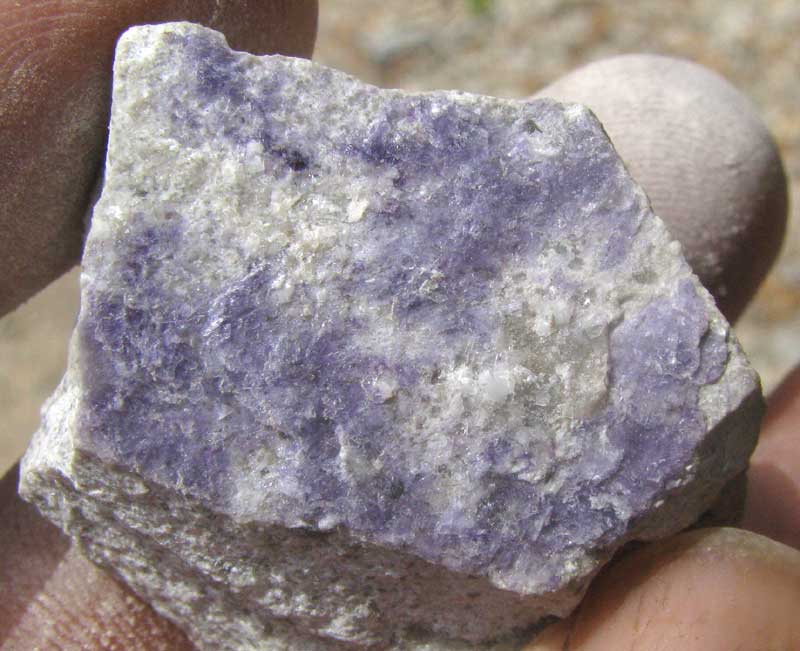Excerpts from Jim Conrad's
Naturalist Newsletter

from the August 19, 2012 Newsletter issued from the woods of the Loess Hill Region a few miles east of Natchez, Mississippi, USA
FLUORITE ON GRAVEL
When I returned to the car Karen had collected several pieces of limestone gravel that had been trucked in to cover the road. What had caught Karen's eye is that some of the faces of these rock particles displayed a distinct violet hue, as shown above. Karen had collected similarly colored amethyst in a mine in Arkansas so she was excited and full of questions, knowing that amethyst is a valued gemstone and that where there's a little amethyst there might be more.
"Fluorite," I said, which Karen didn't find very convincing. That particular violet hue is rare among rocks, and she'd only seen amethyst of that color.
The definitive way to distinguish the two minerals is by noting the form of their crystals. Amethyst is a form of quartz, so its crystals are normally six-sided prisms. In contrast, fluorite crystals normally are cubic, with four sides. However, the violet mineral on this limestone gravel wasn't forming crystals large enough to see without a microscope, so that evidence wasn't available to us.
My ground for calling it fluorite and not amethyst was that the violet color appeared on the face of a piece of limestone gravel. Limestone is mainly calcium carbonate (CaCO4), and fluorite is calcium fluoride (CaF2). Both are based on calcium, and fluorite is known to occur in mineral veins in association with limestone.
In contrast, amethyst, being a form of quartz, is silicon dioxide (SiO2), based on silicon. Though quartz is abundant in most forms of sand and as an "impurity" in sedimentary rocks like limestone, it originates in igneous and metamorphic environments. The limestone from which our gravel was made was a sedimentary rock, not an igneous or metamorphic one. Karen had seen her amethyst in a quartz-crystal-collecting mine up in northwestern Arkansas, amethyst was to be expected there, but not here.
But, it's interesting enough to find fluorite, for that mineral can be very pretty and useful. Sometime it forms spectacular crystals worthy of exhibition in museums, and sometimes it's used decoratively. It's also much used in industry, where it is referred to as fluorspar.
Because of fluorspar's low melting temperature, traditionally it's been used as a flux. In the field of metallurgy, fluxes are substances employed to refine metals by combining with impurities to form a molten mixture that can be readily removed. So, in the production of aluminum, for instance, fluorspar is added to ore, it combines with the non-aluminum part, then you remove the fluorspar "slag" that separates from the aluminum, and are left with a more refined aluminum. Purer forms of fluorspar are used to manufacture opalescent glass, enamels and cooking utensils. The highest grade of fluorspar is used to make hydrogen fluoride and hydrofluoric acid, both much used by the pharmaceutical and other industries. For example, hydrogen fluoride serves as a catalyst during the oil refining process.